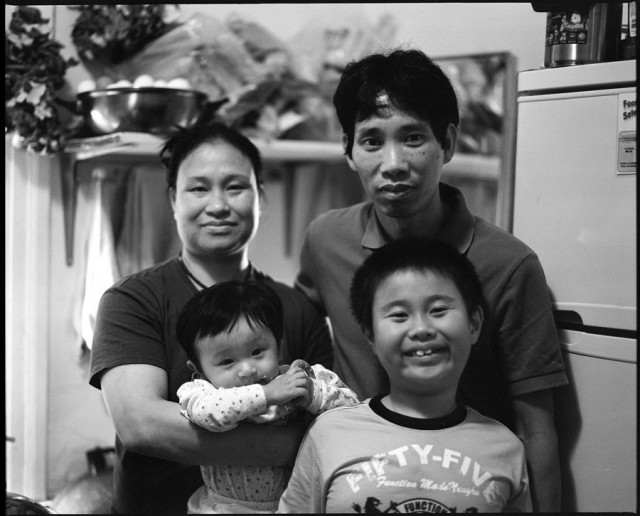We've been covering the housing crisis for a while now, so we're quite taken with this photo essay looking at a little-explored component of San Francisco's housing stock. "Life Inside S.F.'s Vanishing Single Resident Occupancies," by James Hosking and Jeremy Lybarger, was published Friday in The Bold Italic. The intro for the essay:
There are approximately 530 single resident occupancy (SRO) hotels in San Francisco. They are home to more than 18,000 people, the majority of whom live in low-income neighborhoods such as the Tenderloin and Chinatown. A 2009 report from the Human Services Agency listed average monthly rent at $500 to $600, but it’s not uncommon for tenants to pay as much as $1,000 for an 8-by-10 room with no bathroom or kitchen. As San Francisco’s cost of living continues to explode, many housing activists worry about what will become of the vulnerable SRO population. Between 1970 and 2000, the city demolished or converted to condos 15,000 SRO units. Life has always been precarious for these residents and far from idyllic in even the best-managed buildings. Here are the stories of six people trying to survive in a city that’s increasingly out of reach.
Here's one of the photos, of "Jun and family," living in a wood-framed, three-story residential hotel, "halfway down a dead-end alley in Chinatown, tucked away from the bustle of Grant Avenue."

We asked photographer James Hosking how the project came about, and he wrote us the following:
The idea for this project came when I was working on an in-progress series profiling transgender sex workers and drag performers. These subjects invited me to shoot them in their SROs, which was the first time I'd been inside such buildings. I was intrigued by people I encountered in the hall and what seemed to be their private economy of bartering and borrowing. Although they were different ages and from different backgrounds, they shared a strong sense of community.
To find participants, I contacted nonprofits such as the Mission SRO Collaborative, the Chinatown Community Development Center, and the Community Housing Partnership. They allowed me to speak at resident meetings and they distributed fliers on my behalf. I wanted to document a mix of people from different neighborhoods, all of varying ages and ethnicities. I also wanted to explore life in a variety of buildings, from nonprofits to those privately managed.
The residents in this essay were extremely generous. Some — Cynthia and Clarence, in particular — are passionate about their work as SRO community organizers. They felt like my project was a way for them to share a personal perspective on SROs with a broad audience.
The tenants had different attitudes about living in an SRO. Some wanted to get out as soon as possible, while others couldn't imagine being anywhere else. I think everyone was dismayed by the prohibitive housing market in San Francisco.
It was my objective to work with Jeremy, the project's writer, to make a piece that did not use the participants as illustrations of an isolated economic condition. I was more interested in capturing their individual backgrounds and experiences. I wanted readers to ask themselves: How does where I live impact my engagement with the world around me?
See the rest of the photo essay at The Bold Italic. You can read about the history of SROs in San Francisco at the Central City SRO Collaborative site.